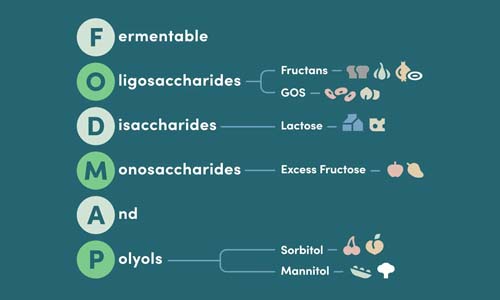Is Mayo Low FODMAP? The Complete 2025 Guide

If you're navigating the low FODMAP diet to manage IBS or digestive sensitivities, you've probably wondered about everyday condiments like mayonnaise. The good news? You don't have to give up that creamy, tangy flavor that makes sandwiches, salads, and dips so satisfying.
Key Takeaways
- The low FODMAP diet helps manage IBS and digestive sensitivities.
- People often question if common condiments like mayonnaise fit into a low FODMAP diet.
- Mayonnaise can still be enjoyed without sacrificing flavor on a low FODMAP diet.
- Mayonnaise adds creamy and tangy taste to sandwiches, salads, and dips.
Table of Contents
FODMAPs-fermentable oligosaccharides, disaccharides, monosaccharides, and polyols-are specific carbohydrates that can trigger digestive discomfort in sensitive individuals. These compounds are poorly absorbed in the small intestine and can ferment in the gut, leading to bloating, gas, abdominal pain, and other uncomfortable symptoms.
The low FODMAP diet is a scientifically-backed approach that helps identify and eliminate these trigger foods during an elimination phase, then systematically reintroduces them to pinpoint individual sensitivities. Originally developed by researchers at Monash University, this dietary strategy has proven remarkably effective for managing IBS symptoms and improving quality of life for millions of people worldwide.
One of the biggest challenges on a low FODMAP diet isn't just avoiding obvious triggers like certain fruits or wheat products-it's navigating the hidden FODMAPs lurking in processed foods, sauces, and condiments that seem harmless but can derail your progress.
Mayonnaise presents a particularly interesting case study. At its core, traditional mayo contains simple, low FODMAP ingredients. But modern commercial varieties often include flavor enhancers, preservatives, and seasonings that can introduce FODMAP triggers without you realizing it.
The key lies in understanding which ingredients to watch for, how to read labels effectively, and knowing safe portion sizes. With the right knowledge, you can confidently include mayonnaise in your low FODMAP meal planning-whether you're making a quick tuna salad, preparing a creamy coleslaw, or crafting a gourmet aioli.
Quick Answer
Yes, mayonnaise can be low FODMAP when it contains only basic ingredients like egg yolks, oil, vinegar or lemon juice, and salt. However, many commercial brands add garlic powder, onion powder, or high-FODMAP sweeteners that make them unsuitable. The safe serving size is up to 2 tablespoons per meal. Always check ingredient lists carefully and choose plain varieties or make your own to ensure FODMAP compliance.
Understanding FODMAPs and Their Digestive Impact
To make informed decisions about mayonnaise, it's essential to understand what makes certain foods problematic for sensitive digestive systems. FODMAPs encompass four distinct categories of carbohydrates:
- Fermentable Oligosaccharides
- Including fructans and galacto-oligosaccharides found in wheat, garlic, and legumes
- Disaccharides
- Primarily lactose from dairy products like milk and soft cheeses
- Monosaccharides
- Excess fructose in certain fruits, honey, and high-fructose corn syrup
- Polyols
- Sugar alcohols like sorbitol and mannitol in stone fruits and artificial sweeteners
When these compounds reach the large intestine undigested, gut bacteria ferment them rapidly, producing gas and drawing water into the bowel. For people with IBS or sensitive digestion, this process can trigger a cascade of uncomfortable symptoms within hours of eating.
The beauty of the low FODMAP approach is that it's not about permanent restriction-it's about gaining control. By identifying your specific triggers, you can enjoy a varied, flavorful diet while maintaining digestive comfort.
This is where condiments like mayonnaise become crucial. They're often the difference between bland, restrictive meals and the bold, satisfying flavors that make eating enjoyable. Understanding which versions are safe empowers you to maintain both digestive wellness and culinary pleasure.
Mayonnaise and FODMAPs: Ingredient Analysis
Understanding whether mayonnaise is low FODMAP requires examining what goes into this beloved condiment. Traditional mayonnaise contains surprisingly few ingredients, which works in favor of those following a low FODMAP diet.
Standard Mayo Ingredients
Classic mayonnaise relies on a simple emulsion of basic ingredients that are naturally low FODMAP:
- Egg yolks - The emulsifying base, completely FODMAP-free
- Oil - Typically vegetable, canola, or olive oil, all low FODMAP
- Acid - Vinegar or lemon juice for tang, both safe options
- Salt - Pure sodium chloride poses no FODMAP concerns
- Mustard - Often added for flavor stability, low FODMAP in typical amounts
When mayonnaise contains only these fundamental ingredients, it's generally safe for low FODMAP eating. The challenge arises with commercial varieties that enhance flavor and shelf-life through additional ingredients.
Commercial mayonnaise is typically low FODMAP when free from garlic powder, onion powder, and high-FODMAP sweeteners. However, "natural flavors" or unspecified "spices" on ingredient lists can be red flags for hidden FODMAPs.
Common Variations and What to Avoid
The mayonnaise aisle offers countless variations, but not all are created equal for sensitive digestive systems. Here's what to watch for:
- Flavored Mayonnaise
- Garlic aioli, herb mayo, and specialty flavors often contain high-FODMAP seasonings like garlic powder or onion powder
- Light or Reduced-Fat Mayo
- May include high-fructose corn syrup, honey, or other sweeteners to maintain palatability
- Organic Varieties
- While often cleaner, organic doesn't guarantee FODMAP-free-still check for problematic seasonings
- Vegan Mayo
- Plant-based versions may use different stabilizers or sweeteners that could introduce FODMAPs
The key is developing label-reading skills that help you identify risky additives before they end up in your cart.
How to Choose Safe, Low FODMAP Mayonnaise

Reading Labels Like a Pro
Becoming proficient at ingredient analysis transforms grocery shopping from guesswork into confident decision-making. Here's our step-by-step approach:
- Scan for obvious triggers first - Look for "garlic powder," "onion powder," or "natural garlic flavor"
- Check sweetener sources - Avoid high-fructose corn syrup, honey, or agave nectar
- Question vague terms - "Spices," "natural flavors," or "seasonings" without specifics require caution
- Verify preservatives - Most are fine, but some contain hidden sugars or problematic compounds
- Contact manufacturers when uncertain - Many companies provide detailed ingredient breakdowns upon request
The Monash Low FODMAP app includes a product scanner feature that can help identify certified low FODMAP products, though it's not comprehensive for all mayonnaise brands.
Store-Bought vs. Homemade Mayonnaise
Both approaches have merit, depending on your priorities and comfort level in the kitchen:
Store-Bought Pros
- Convenient and shelf-stable
- Consistent texture and flavor
- Widely available certified options
- No food safety concerns with raw eggs
Store-Bought Cons
- Hidden ingredients and preservatives
- Limited flavor customization
- Higher cost per serving
- Packaging waste considerations
Homemade mayonnaise offers complete ingredient control, allowing you to create FODMAP-friendly versions with confidence. A basic recipe requires just egg yolks, a neutral oil, lemon juice or vinegar, and salt-all whisked together until thick and creamy.
Serving Sizes and Safe Portions
Even when using confirmed low FODMAP mayonnaise, portion control remains crucial for maintaining digestive comfort. The standard low FODMAP serving size for mayonnaise is up to 2 tablespoons per meal, according to Monash University research.
Safe Serving Guide: 2 tablespoons (30g) of plain mayonnaise per meal provides creamy richness without overwhelming your digestive system.
Larger servings might cause problems not because mayonnaise becomes high FODMAP, but because the cumulative effect of fats and any trace compounds can trigger symptoms in particularly sensitive individuals. This serving size allows you to enjoy mayo-based salads, sandwiches, and dips while staying within safe parameters.
For context, 2 tablespoons is enough to generously dress a tuna salad sandwich, create a creamy coleslaw for four servings, or make a flavorful dip for vegetables. It's more generous than you might expect, especially when combined with other low FODMAP flavor enhancers like chive sprigs, fresh herbs, or a splash of Gourmend shelf-stable broth carton for umami depth.
Mayo Alternatives on a Low FODMAP Diet

Best Commercial Low FODMAP Mayo Brands
Several trusted manufacturers produce low FODMAP mayonnaise brands that consistently meet safety standards for sensitive digestive systems. These options eliminate guesswork from your shopping routine:
- Hellmann's Real Mayonnaise - The original recipe contains only basic ingredients without problematic additives
- Duke's Mayonnaise - Known for simple ingredient lists and no added sugars
- Chosen Foods Avocado Oil Mayo - Uses avocado oil base with clean ingredients
- Primal Kitchen Mayo - Paleo-friendly with minimal, whole-food ingredients
When selecting from these brands, always verify the specific product variant, as companies occasionally reformulate or offer flavored versions that may introduce FODMAPs.
Creative Mayo Substitutes
Sometimes the best approach involves exploring alternatives that deliver similar creaminess and richness without relying on traditional mayonnaise:
Creamy Alternatives
- Plain lactose-free Greek yogurt (tangy and protein-rich)
- Mashed avocado in small portions (¼ avocado per serving)
- Tahini thinned with lemon juice
- Olive oil-based dressings with herbs
Flavor Enhancers
- Garlic-infused oil for aromatic depth
- Fresh chive sprigs for mild onion-like flavor
- Dijon mustard for tangy complexity
- Gourmend shelf-stable broth carton for umami richness
These substitutes work particularly well when you're creating low FODMAP au jus or other sauce-based applications where mayonnaise traditionally provides body and richness.
Mayo in Recipes and Everyday Use
Substituting Mayo in Popular Dishes
Understanding how to adapt mayo-heavy recipes ensures you never feel deprived while maintaining digestive comfort. Here's our tested approach for common applications:
- Chicken Salad
- Use 2 tablespoons mayo mixed with 1 tablespoon lactose-free yogurt and fresh chive sprigs for extra volume and tang
- Coleslaw
- Combine mayo with rice vinegar and a splash of Gourmend shelf-stable broth carton for umami depth without overwhelming FODMAP load
- Sandwich Spreads
- Mix mayo with Dijon mustard and fresh herbs to create more flavor impact with less total mayo needed
- Creamy Dressings
- Thin mayo with lemon juice and olive oil to extend volume while maintaining creaminess
The secret to successful mayo substitution lies in building layers of flavor through low FODMAP ingredients rather than relying solely on quantity for satisfaction.
Safe Flavor Enhancement Techniques
Maximizing flavor while respecting FODMAP limits requires strategic ingredient combinations. These techniques help you create restaurant-quality results at home:
- Start with quality mayo - A good base makes all other flavors shine brighter
- Add acid gradually - Lemon juice or vinegar brightens and extends the mayo
- Include fresh herbs - Chives, parsley, and dill provide complexity without FODMAPs
- Layer umami elements - A few drops of Gourmend shelf-stable broth carton adds surprising depth
- Balance with salt - Proper seasoning makes modest amounts of mayo taste more luxurious
Special Considerations and Troubleshooting

What to Do If Mayonnaise Upsets Your Stomach
Even confirmed low FODMAP mayonnaise can occasionally cause discomfort, and understanding why helps you adjust your approach effectively.
Common triggers beyond FODMAPs: High fat content, egg sensitivity, or consuming too much too quickly can cause digestive upset even with safe ingredients.
If you experience symptoms after eating mayonnaise, consider these troubleshooting steps:
- Reduce portion size - Try 1 tablespoon instead of 2 to test tolerance
- Check for cross-contamination - Shared utensils or surfaces might introduce FODMAPs
- Evaluate timing - Eating mayo with other rich foods might overwhelm digestion
- Consider egg sensitivity - Some people react to eggs independently of FODMAPs
- Review other meal components - The mayonnaise might not be the actual trigger
During the FODMAP reintroduction phase, you'll develop better understanding of your individual tolerance levels and can adjust accordingly.
Enjoying Mayo Successfully on a Low FODMAP Diet
The question "is mayo low FODMAP" has a reassuringly positive answer for most people following this eating approach. Plain mayonnaise made with basic ingredients fits comfortably within low FODMAP guidelines, provided you stick to reasonable portions and choose products without problematic additives.
Success comes from developing confidence in label reading, understanding safe serving sizes, and knowing which brands consistently deliver FODMAP-friendly products. Whether you choose commercial options from trusted manufacturers or create homemade versions with complete ingredient control, mayonnaise can remain a flavorful part of your culinary repertoire.
Remember that the low FODMAP diet is about abundance, not restriction. With proper knowledge and quality ingredients like those we develop at Gourmend Foods, you can create satisfying, gourmet meals that support both your taste preferences and digestive wellness.
The key lies in approaching mayonnaise-like all foods on a low FODMAP diet-with informed awareness rather than fear. Check ingredients, mind your portions, and enjoy the creamy richness that makes so many dishes more satisfying. Your digestive system and your taste buds can both be happy with the right approach. For more inspiration, explore our collection of low FODMAP recipes and learn more about the science behind FODMAPs from this external resource.
Check out our Low Fodmap Bundles
Frequently Asked Questions
What brands of mayo are low FODMAP?
When choosing mayonnaise on a low FODMAP diet, look for brands that use simple, clean ingredients without onion or garlic powders. Many clean-label mayos rely on vinegar, oil, eggs, and mustard-all low FODMAP staples. Always check the label for hidden high FODMAP ingredients, and if in doubt, opt for small servings or consider making your own mayo with low FODMAP ingredients.
Is mayonnaise ok to eat with IBS?
Mayonnaise can be a safe and tasty addition to your meals if you manage IBS, provided it doesn’t contain high FODMAP ingredients like garlic or onion powders. Its fat content tends to be gentle on digestion for most people, but portion control is key. Choose brands with simple, gut-friendly ingredients to avoid triggering symptoms.
Is Hellmann's mayonnaise low FODMAP?
Hellmann's mayonnaise generally avoids onion and garlic but may include ingredients like vinegar or lemon juice that are low FODMAP in typical amounts. However, some varieties may contain additives or flavorings that could cause discomfort for sensitive individuals. We recommend checking the ingredient list carefully and testing your tolerance with small servings.
What sauces can you have on a fodmap diet?
Low FODMAP sauces often rely on ingredients like tomatoes, herbs, garlic-infused oil, mustard, and vinegar, without actual garlic or onion pieces. Classic choices include mayonnaise made with low FODMAP ingredients, homemade pesto without garlic, soy sauce, and certain hot sauces without high FODMAP spices. Using Gourmend’s seasonings and broths can also elevate your sauces with gut-friendly, gourmet flavor.
Can I eat tuna on FODMAP?
Yes, plain canned or fresh tuna is low FODMAP and a great source of protein that fits well within a low FODMAP diet. Just watch out for added ingredients in flavored or pre-seasoned tuna products, as these might include high FODMAP components. Opt for tuna packed in water or olive oil with minimal additives for the safest choice.
Is honey ok for low FODMAP?
Honey is considered high FODMAP because it contains fructose, which can be hard to digest for people with IBS. Small amounts (less than a teaspoon) might be tolerated by some, but generally, it’s best to avoid honey or replace it with low FODMAP sweeteners like maple syrup or glucose syrup to keep your meals gentle on digestion.





